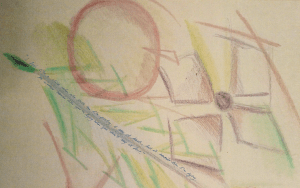The farming industry is not typically considered to be associated with technological innovations – with data, automation and drones – but that’s changing. The advent of new technology has already led to changes in the field of agriculture, and will only continue to do so as the technology becomes scaled and more accessible.
It is common knowledge that the world population is projected to reach between 8 to 10.5 billion by 2050; however, it is less known that food production will need to rise between 25 percent to 70 percent to meet the consequently rising demand. As a result, farmers face the challenge of using existing land resources to provide more food.
Understandably, this may seem to be a bleak and unpromising future for many. However, the trajectory of the future of farming follows in accordance with existing population theory, namely that of agricultural economist Ester Boserup. Her theory of agricultural intensification states that population increase is what drives human ingenuity and fuels intensity in agricultural production; as populations increase and humans become aware for the need of increased food production, they develop new methods and technologies to do so. Today, examples of Boserup’s belief in “human ingenuity” can be seen to take the form of the Internet of Things (IoT), automation, artificial intelligence, drones and Geographic Information Systems (GIS).
Although the combination of these technologies creates a favourable future for food productivity, they generate secondary social issues and implications that need to be addressed within diverse geographic frames and balanced against the global context.
At the forefront of technology’s expanding presence in agriculture is data. Like every other business, the food business is increasingly tethered to the acquisition, storage and analysis of data, which can then be used in the practice of quality control, increasing output and lowering labour costs. This has implications for productivity, the livelihood of workers and sustaining a growing population.
Furthermore, data lays the foundation for several technologies on the farm, and the term IoT is best understood through its relationship to it: it is a phrase to describe the ever-increasingly connected nature of the devices we use and the world at large, which allows us to gather, exchange and utilize data in a quantity previously unknown to man.
What can aptly be described as an ecosystem of data is often achieved through the combination of sensors and cloud computing, which allow for the coordination between IoT, automation and artificial intelligence.
An example of this in practice is Rivendale Farms, which can be viewed as both a modern farm and a startup. Located about 20 miles out of Pittsburgh, it’s a 250-acre farm financed by the billionaire, tech investor and serial entrepreneur Thomas Tull. And more importantly, it’s a farm with an almost completely automated greenhouse and cowshed.
The greenhouse itself is a quarter-acre in size and uses a multitude of sensors to detect temperature, humidity and sunlight, which are then relayed to a central automation panel. The information gathered is used to automatically maintain the sensitive and precise specifications required to best grow the kale, arugula and baby carrots within.
The alteration of conditions within the greenhouse doesn’t require the presence of humans, and can be continued on a 24-hour basis. In other words, the produce can be tended to when the environment demands it, rather than when someone is available to do so. Rivendale’s greenhouse is an example of IoT in the practice of farming; the combination of sensors, data and automation is used to ensure the health of plants.
Equally as impressive, the cows in Rivendale are monitored and milked by robotic machines. The process of feeding, washing
Additionally, this efficiency translates into more than streamlining processes and reducing labour. The cows in Rivendale produce 15 percent more milk that the average of their breed, and this can be directly attributed to technology. The cows in Rivendale can be milked more often because sensors focused on the cows can detect when they are ready – the procedure follows the schedule of the individual cow rather than the traditional human schedule of milking twice a day, resulting in a higher output.
The achievements of Rivendale demonstrate the benefits of using emerging technologies on a farm and at a small scale act as an example of how technology can be used to make progress towards feeding a population of 10 billion. The advantages of this have been realized more widely in Europe where 30% of cows are milked by some variety of machinery compared to a low but steadily rising figure of 2% in the US.
A key reason for this low figure could be the current prices of the machinery. At Rivendale the machines were purchased at USD 200,000 apiece. This makes Rivendale’s high-end automation machinery inaccessible to the typical small farmer of today.
However, it is important to note that less expensive technologies can still be used to streamline the process of farming and achieve the needed task of using fewer inputs to produce more output at a faster rate. Rather than a recipe to be followed, Rivendale should be held as an example of technology’s integral role in the future of farming.Though, until the problem of affordability is resolved, the level of productivity that is possible will not be realized on big nor small farms.





